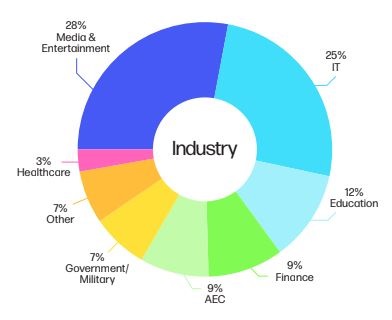
There’s no doubt that the global pandemic accelerated adoption of hybrid work models, and as we close out 2022, hybrid is well established within workplace culture. HP Teradici’s new Hybrid Work Report reveals key challenges that companies are faced with when implementing hybrid work—IT teams are busier than ever meeting a variety of employee needs in the office, remotely, and a combination of both; company policies are evolving; and ensuring employees are productive no matter where they’re working is a top priority. In the hybrid workplace, IT has a more strategic position to influence company policy and culture.
To understand the state of hybrid work in 2022 and beyond, HP Teradici surveyed more than 270 IT leaders across a range of industries, including media and entertainment (28 per cent), IT (25 per cent), education (12 per cent), finance (nine per cent), AEC (nine per cent), government/military (seven per cent), and healthcare (three per cent).
Highlights from the report included:
Businesses are investing in digital workspaces technology. More than three quarters of respondents reported staff were actively using remote desktops. A further 13 per cent were either looking into implementation, or already trialing it. Only nine per cent reported no interest in the technology.
Businesses are facing specific challenges implementing or managing remote desktops. For example, 59 per cent of all respondents reported issues with pixelation and latency. 34 per cent found the maintenance and management of remote desktops cumbersome, and 32 per cent also said the implementation process for remoting technology was too difficult.
Hybrid work is influencing company policies. According to 85 per cent of respondents, existing company policies have changed to reflect the new hybrid working environments, either somewhat (44 per cent) or completely (41 per cent).
What will the future of hybrid work look like?
The report indicates that companies favour technology with high security provisions and high performance in a hybrid environment. They’re also looking for solutions that enable collaboration and keep employees connected, no matter where they’re working.
As hybrid work models continue evolving, the IT perspective will become more critical. They aren’t just solving technical problems; they’re in a position to influence the direction of company policies and even company culture. IT’s recommendations for digital workspaces technology will help shape the hybrid workplace.

